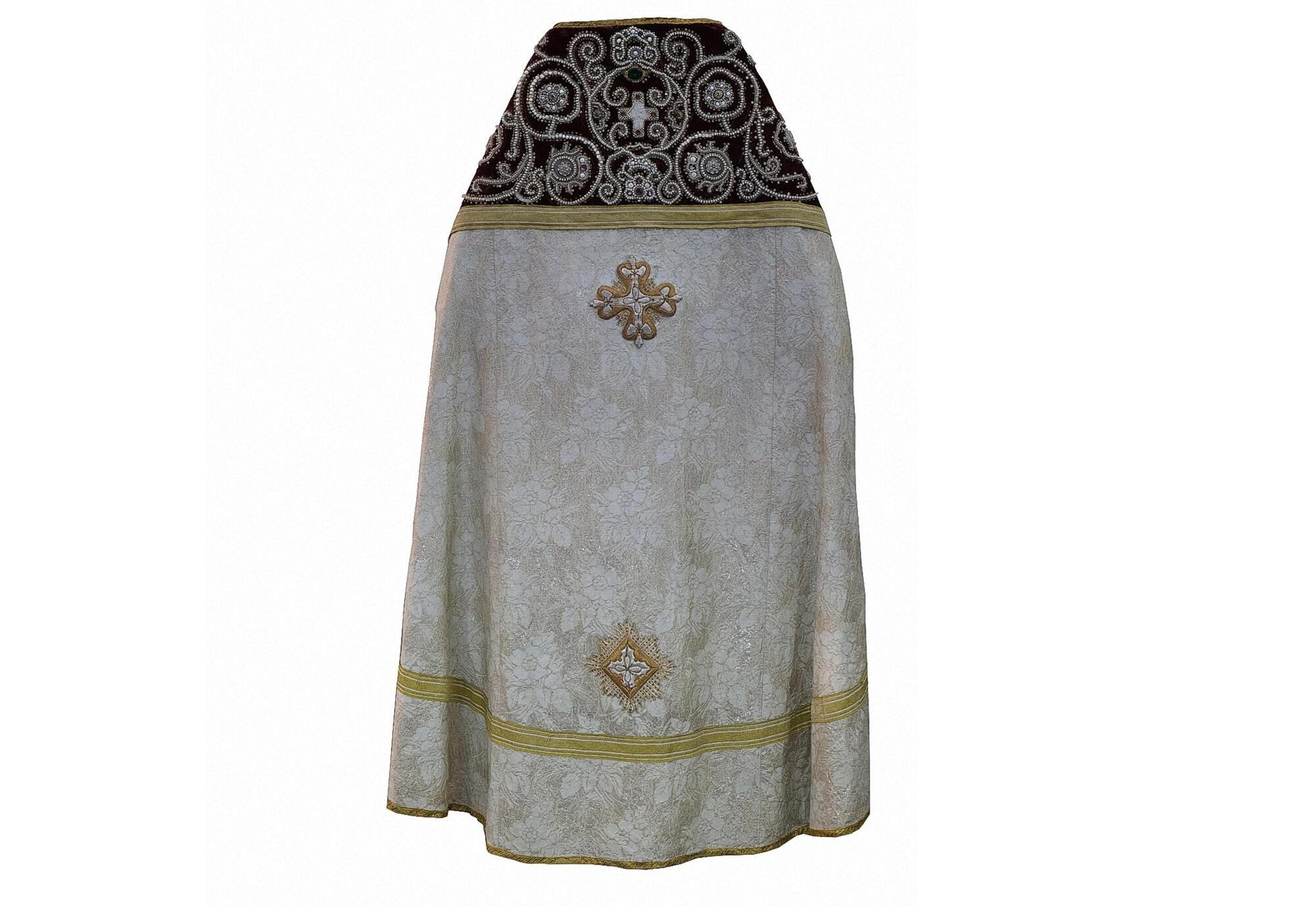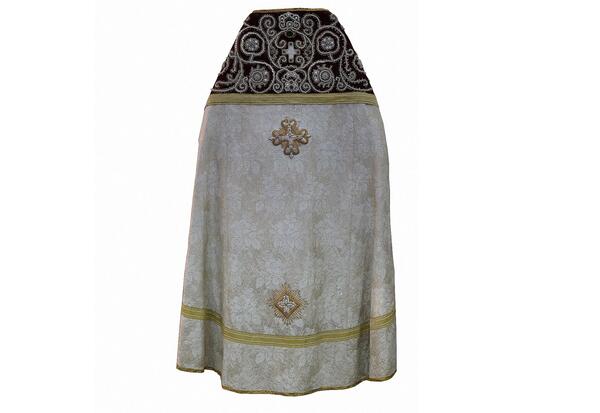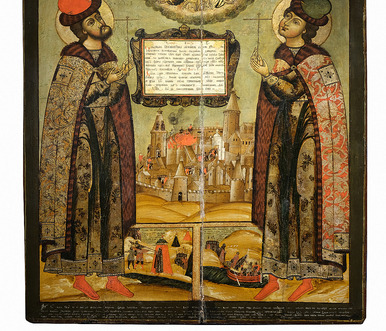The museum houses a large collection of church vestments. Almost all of them came in 1922 and 1923 when churches began to close in Kargopol. The fabrics from which these products are sewn are very different. But most of the items are still made of silk and brocade of various types.
A phelonion is the upper liturgical vestment of an Orthodox priest. It is sewn without sleeves and with an opening for the head. From the 16th — 17th centuries, heavy gold brocade was chosen for this type of clothing, so that the top rose in a cone above the shoulders.
The symbolism of the phelonion includes many spiritual concepts, but mainly it means the radiance of God’s glory. In layman’s terms, glory is a special bright radiance that is visible when God’s presence manifests itself in full force. That is, Jesus Christ, being the Son of God, looked like an ordinary person in his earthly life, but after the Resurrection, he appeared before the disciples in his true form — in the radiance of glory.
The gold and silver colors of the fabrics in the phelonion emphasize the importance of this radiance in particular, although such vestments could also be sewn from fabrics of other basic colors accepted in the divine service. For example, there could be black phelonions with white stripes.
The phelonion usually consists of an oplechye and a body. The oplechye (mantle) is the upper part, the museum’s one is made of burgundy velvet and decorated with embroidery of gold metal threads, pearls, beads, and colored glasses. Its ornament includes symmetrical S-shaped motifs and stylized flowers. In the center, there is a four-pointed cross with four brown glass inserts at its ends. To the right and left of the cross, as well as in four other elements, there are metal drobnytsy — special miniature inserts on a wooden base, decorated with red and green glass.
The body is the main detail of the phelonion without the oplechye. It is made of brocade, on which a pattern is made in the form of white bouquets against a silver background. The bouquets consist of openwork flowers with spikelets. A figured cross made with golden and silver threads, sequins and gold lace is placed under the oplechye.
Cannetille and silver or gold lace embroidery are some of the simplest techniques of church embroidery. Cannetille looks like a thin wire wound with a dense spring. Lace in this case is a type of cannetille, only made of flat wire. It is strung on a special quadrangular or pentagonal base. Due to the sharp deflections on the edges, the light reflected from the lace glitters especially beautifully.
A phelonion is the upper liturgical vestment of an Orthodox priest. It is sewn without sleeves and with an opening for the head. From the 16th — 17th centuries, heavy gold brocade was chosen for this type of clothing, so that the top rose in a cone above the shoulders.
The symbolism of the phelonion includes many spiritual concepts, but mainly it means the radiance of God’s glory. In layman’s terms, glory is a special bright radiance that is visible when God’s presence manifests itself in full force. That is, Jesus Christ, being the Son of God, looked like an ordinary person in his earthly life, but after the Resurrection, he appeared before the disciples in his true form — in the radiance of glory.
The gold and silver colors of the fabrics in the phelonion emphasize the importance of this radiance in particular, although such vestments could also be sewn from fabrics of other basic colors accepted in the divine service. For example, there could be black phelonions with white stripes.
The phelonion usually consists of an oplechye and a body. The oplechye (mantle) is the upper part, the museum’s one is made of burgundy velvet and decorated with embroidery of gold metal threads, pearls, beads, and colored glasses. Its ornament includes symmetrical S-shaped motifs and stylized flowers. In the center, there is a four-pointed cross with four brown glass inserts at its ends. To the right and left of the cross, as well as in four other elements, there are metal drobnytsy — special miniature inserts on a wooden base, decorated with red and green glass.
The body is the main detail of the phelonion without the oplechye. It is made of brocade, on which a pattern is made in the form of white bouquets against a silver background. The bouquets consist of openwork flowers with spikelets. A figured cross made with golden and silver threads, sequins and gold lace is placed under the oplechye.
Cannetille and silver or gold lace embroidery are some of the simplest techniques of church embroidery. Cannetille looks like a thin wire wound with a dense spring. Lace in this case is a type of cannetille, only made of flat wire. It is strung on a special quadrangular or pentagonal base. Due to the sharp deflections on the edges, the light reflected from the lace glitters especially beautifully.



